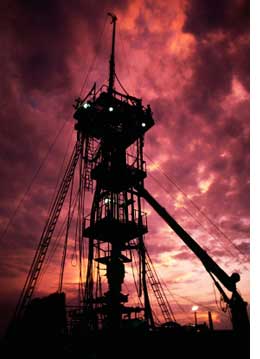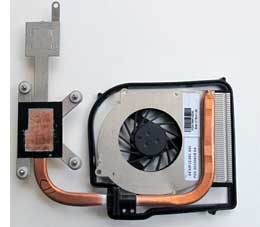For regular desktop and notebook computers, ambient operating temperature is hardly ever an issue. Temperatures usually stay within a fairly narrow range, and the systems have more than adequate cooling fans to remove the heat generated by processors and components.
The situation is very different for mobile systems that may have to operate within a wide range of ambient temperatures. A laptop, for example, may be expected to reliably operate out in the cold at near freezing temperatures, and also in sweltering 100 degree Fahrenheit. Because of that, manufacturers of mobile computers usually include the minimum and maximum recommended operating temperature in their product specifications.
The types of rugged systems we test and review here at RuggedPCReview.com often have operating temperatures far wider than consumer products. These systems are designed to run in freezing temperatures as low as -4 degrees Fahrenheit or lower, and in blistering heat as high as 140 degrees. And unlike consumer desktops and notebooks, there isn't room for large fans and sometimes for no fan at all. How can that be done?
 By using materials that can handle the heat and the cold, and by careful thermal engineering. Thermal engineering is really a science of its own. It deals with managing heat, making sure it's properly channeled, held within predetermined constraints, and kept from damaging circuits and materials. That requires optimized design with proper airflow, proper placement of heat-generating elements, and elimination of heat blocks. It involves sensors, feedback mechanisms, and just generally an overall design that offers maximum performance without exceeding thermal limits that could damage the equipment or make the device too hot to handle.
By using materials that can handle the heat and the cold, and by careful thermal engineering. Thermal engineering is really a science of its own. It deals with managing heat, making sure it's properly channeled, held within predetermined constraints, and kept from damaging circuits and materials. That requires optimized design with proper airflow, proper placement of heat-generating elements, and elimination of heat blocks. It involves sensors, feedback mechanisms, and just generally an overall design that offers maximum performance without exceeding thermal limits that could damage the equipment or make the device too hot to handle.
As a result, a laptop or tablet fan may not come on at all while the device is running cool, but then kicks in when temperatures exceed certain thresholds. If it gets really hot, the fan may be on all the time. When even the fan cannot keep things cool enough, system safeguards may begin throttling down system performance. Almost every notebook owner has experienced situations where the machine gets slower and slower, be it because of a blocked fan intake, or because it's simply too hot. In extreme cases, a system may shut down to prevent itself from becoming damaged.
Problem is that varying performance may not be an acceptable option in mission-critical systems. We have had reports of (and experienced first hand) rugged devices slowing down to a crawl under extreme temperatures, and to greatly reduced levels even within the stated operating temperatures. We conduct our performance benchmarks in a controlled lab environment, but quite obviously, it'd be that much better to run tests at the operating temperature extremes as well, to see if performance holds or degrades.
Now, of course, nothing is ever totally simple. Fans generally do a better job removing heat than more passive systems such as heat sinks, but they also add mechanical complexity and an additional area to seal. The need for a silent system without a fan may well outweigh any other considerations, but it's still important for customers to know exactly what they are getting. So when Xplore Technologies approached us with the claim that their iX104C5 would absolutely not slow down within its very wide -4 to 140 degree Fahrenheit operating temperature range, we decided to see for ourselves.
 The Xplore iX104C5 is one of the toughest and most rugged tablet computers out there. It's also a very mature platform that includes the experience gained from a decade and a half of building such systems. The C5 model comes with an ultra-low power 1.06GHz Intel Core i7 processor that can scale up to 2.13GHz with Turbo Boost. The C5 does have a fan, and we actually criticized the machine for that in our comprehensive May 2011 review (see here). Xplore's argument is that their active remote heat exchanger (see picture to the right) allows them to remove heat so efficiently that the system can run at full speed across its entire operating temperature range.
The Xplore iX104C5 is one of the toughest and most rugged tablet computers out there. It's also a very mature platform that includes the experience gained from a decade and a half of building such systems. The C5 model comes with an ultra-low power 1.06GHz Intel Core i7 processor that can scale up to 2.13GHz with Turbo Boost. The C5 does have a fan, and we actually criticized the machine for that in our comprehensive May 2011 review (see here). Xplore's argument is that their active remote heat exchanger (see picture to the right) allows them to remove heat so efficiently that the system can run at full speed across its entire operating temperature range.
So here's what we did:
We ran our standard PassMark 6.1 performance benchmark on an Xplore iX104C5 under five different operating temperatures, ranging from extreme cold all the way to extreme heat.
First we did a calibration benchmark at normal office temperature, which in our lab with all of its equipment was 77 degrees Fahrenheit.
Then the hot Sacramento, Calif., sun helped us create a blistering 114 degree Fahrenheit setting such as utility workers, field personnel, construction workers or soldiers may encounter. The Xplore became almost too hot to touch, but it ran the benchmarks without a glitch (see below).

Next it was time to find even more extreme temperatures. We heated an oven to 140 degrees and put in not one, but three thermometers to check the temperatures (see picture below, to the right). The wobbly oven controls eventually stabilizied the temperature at 155 degrees Fahrenheit and that's when we ran the benchmarks again. No problem. Then we wondered what might happen if we heated things up a bit more and we went to 180 degrees (and it may have been even a bit more). The Xplore shut down. Which is exactly what it should do to prevent damage.

So it ran the tests in extreme heat, but what about cold? Would things slow down? The iX104C5 went into a fridge and cooled down for a couple of hours. We then ran the benchmarks at 38 degrees Fahrenheit. No problem, and we hadn't expected any. Then it went into the freezer (see picture above to the left) and stayed there for a couple of hours. A very frosty Xplore then ran the benchmarks one final time, at -4 degrees Fahrenheit. Again, no problem.
So how did it do? Check the table below:








